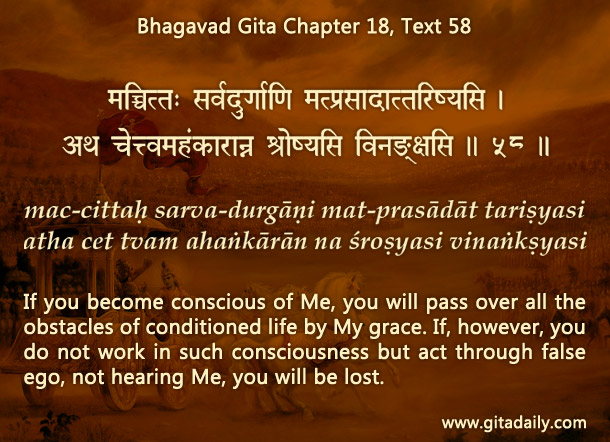
We live in an age of changing “truths” – theories are often propagated as established truths, but when some contrary information comes up, they are replaced with other theories, the new truths.
Coming from such an environment, when we encounter an ancient book like the Bhagavad-gita, we frequently get the question: “Is that still true?”
Yes, it is, because its core content is independent of history.
Of course, as the Gita is spoken at a particular time in history, its message has a contextual part. But its central message transcends its context – it goes beyond the outer world, whose various facets are in constant flux, thereby rendering knowledge about those facets changeable. The Gita’s essential message focuses on the inner world, on the universal human search for meaning and longing for love. It declares that real meaning and true love are found only in a life devoted to God, the all-attractive Supreme Being.
This central message is stated succinctly in the Gita’s last chapter (18.58): godless materialism brings frustration, whereas devotional spirituality brings fulfillment.
This truth doesn’t depend on history; whichever era it may be – ancient, medieval, pre-modern, modern or post-modern – materialism will always fail to satisfy the human need for love and meaning and authentic spirituality will always succeed in satisfying that need. Careful study of history demonstrates this truth through the rise and fall of various civilizations.
Our own life is like a microcosm of history. Therein, too we will see that taking shelter of Krishna brings illumination and empowerment, whereas neglecting his shelter brings delusion and disempowerment.
All history will sooner or later demonstrate this truth. Gita wisdom doesn’t just teach this eternal truth but also guides us to choose intelligently so that our life history demonstrates not the futility of materialism, but the glory of spirituality.



Leave A Comment